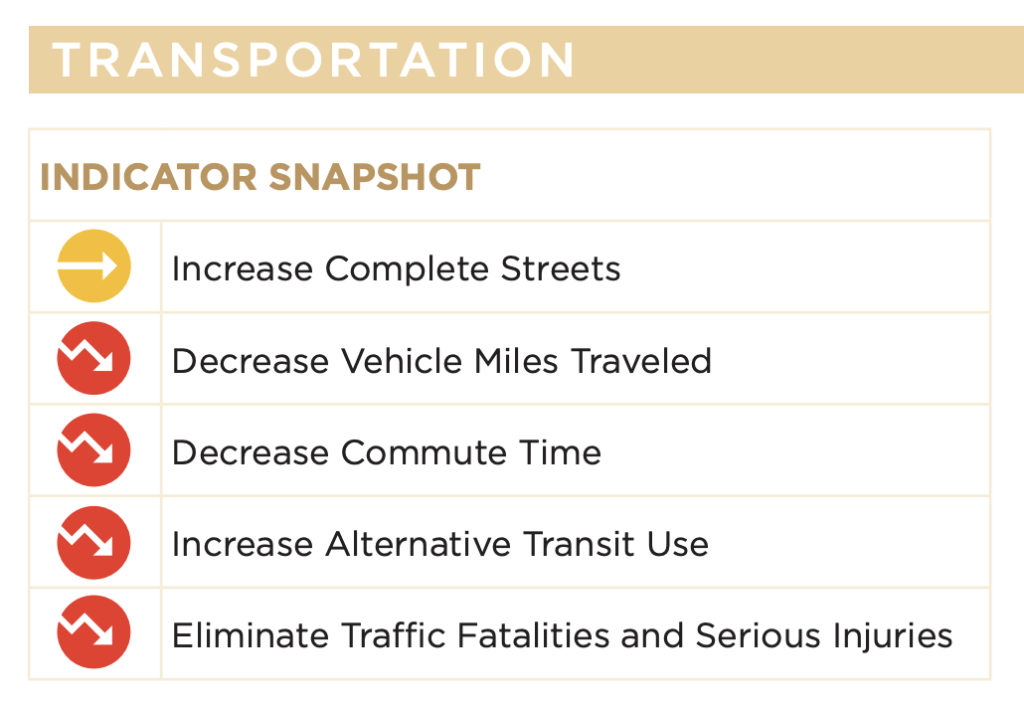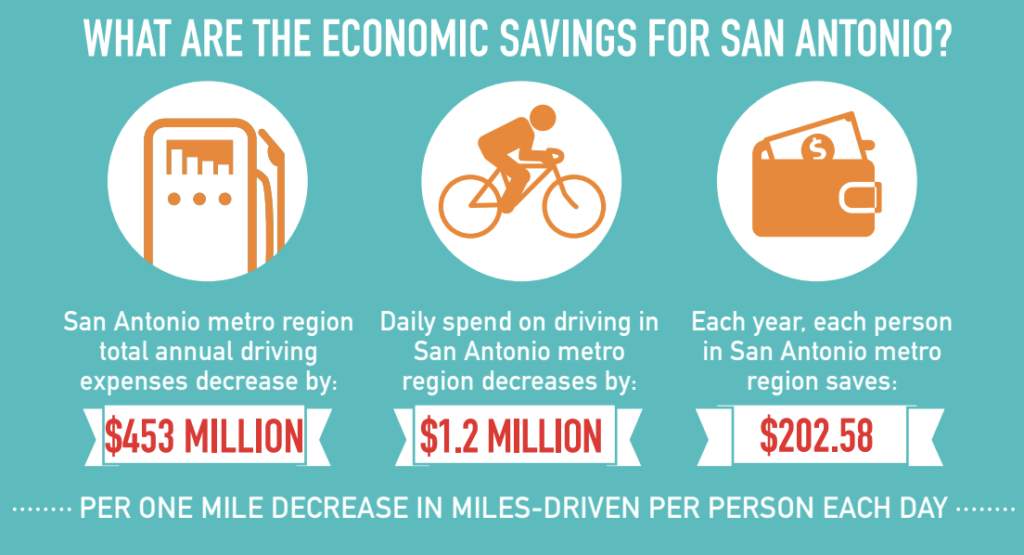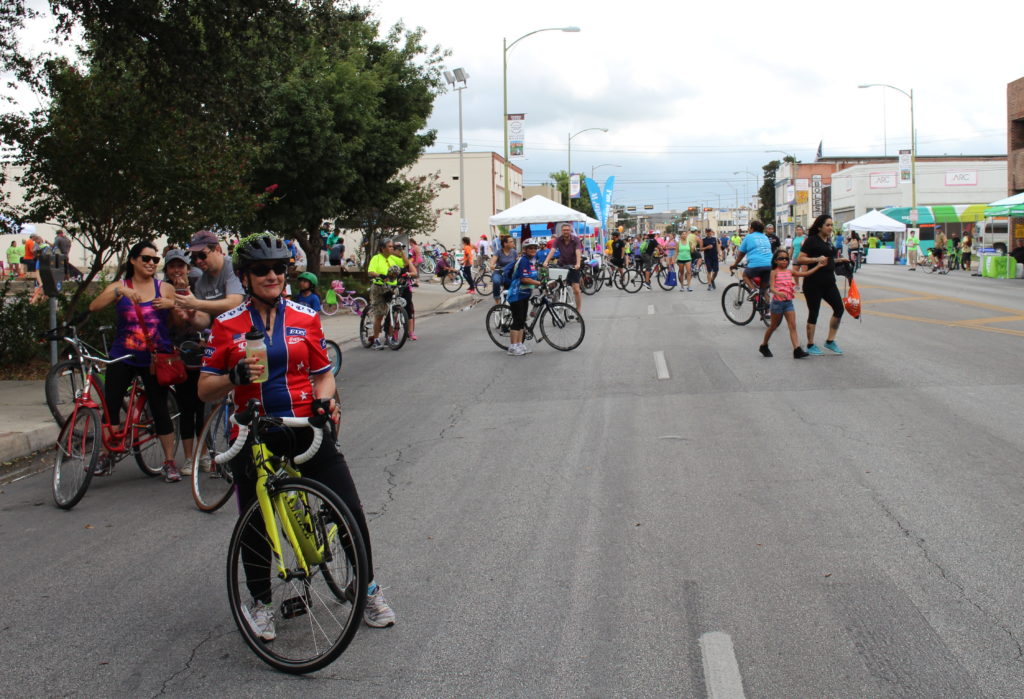In 2010, nearly 6,000 people came together to develop a shared vision for the future of San Antonio. It was arguably the most successful community engagement process in San Antonio’s history.
Because the vision was written by the community, we know what’s important to you—neighbor, student, parent, policymaker, nonprofit leader, philanthropist. You prioritized transportation as one of eleven Cause Areas. You said you wanted San Antonio to be “served by an environmentally-friendly transportation system, where everyone is able to walk, ride, drive, or wheel in a safe, convenient, and affordable manner to their desired destinations.” You also said you wanted “frequent and reliable mass transit services to connect communities,” so that our “transportation infrastructure meets community needs.”
The Vision: San Antonio is served by an environmentally-friendly transportation system where everyone is able to walk, ride, drive or wheel in a safe, convenient, and affordable manner to their desired destinations. Frequent and reliable mass transit services connect communities, and transportation infrastructure meets community needs.
The Community Vision provides such clear answers for everything we want in our city. Together, we literally crafted what we wanted to see and feel in our community. And still…we, as community leaders in charge of making policies, allocating dollars, or delivering programs and services, sometimes waver on what we think the community wants.
SA2020’s unique bird’s eye view of 61 Community Indicators and the day-to-day impact of more than 180 multi-sector partners allows us to both celebrate and highlight major gaps in San Antonio’s progress toward our Community Vision. It shouldn’t be a surprise that mobility has been, and continues to be, a complex community challenge in San Antonio.

While the number of miles of complete streets has grown incrementally, we are not moving at the rate we need in order to get to our 2020 goal. Both our vehicle miles traveled (VMT) and commute times have steadily increased instead of showing the decrease we said we wanted. As a community, we said we wanted to increase our alternative transit use, and the numbers show we are moving further from our goal. And finally, after prioritizing Vision Zero—that’s zero traffic accidents causing serious injuries and fatalities for pedestrians and cyclists—we’ve seen a steady increase in these types of incidents.
At SA2020, we are not experts in planning or street development or even architecture. What we are experts in is community engagement, data analysis, evaluation, and systems disruption.
Which brings us to the case of the Broadway Corridor.
Since the original visioning process in 2010, our community has emphasized a desire to get out of our cars over and over again. In survey after survey. At public meeting after public meeting (see SA Tomorrow, VIA Transit’s Vision 2040, Connect SA, Alamo Area MPO Regional Bicycle & Pedestrian Plan). And, turns out, getting out of our cars actually pays real dividends for each of us individually, as well as our community as a whole.
By decreasing miles traveled in a car by one mile per day, the San Antonio metro region could save nearly $453 million in total driving expenses. (Source: San Antonio City Dividends) Seriously. If every San Antonian drove one fewer mile per day, each year, each person in the San Antonio metro region could save just over $200. And, let’s be clear, transportation is the number one expenditure for a household after housing costs (Bureau of Labor Statistics, 2017).

Together, we’ve already established that we want our residents to be able to get safely to their destination no matter the transportation mode they choose. In order to make this happen, we must change the narrative of what “transit” looks like, and we must change our approach. San Antonio’s Community Vision demands as much. We can no longer look at streets as a mode for only cars and, instead, must consider the full breadth of the street, solving for access for everyone. Streets, as we know, are the lifelines to our jobs, schools, and healthcare providers.
Quite simply, we can’t both force micro-mobility options like scooters off our sidewalks and not provide protected lanes for them to use. We can’t both achieve Vision Zero and also keep putting more cars on the road as our population continues to grow exponentially.
The Community Vision also demands partnership and collaboration because no one organization can be responsible for achieving community results. It requires leadership from our elected officials to give our City staff time to develop people-centered services. It means businesses along a corridor must be ready to accommodate all means of travel, too. It means making room for our friends on bicycles and in buses.
At SA2020 we believe everyone is capable of change because we are all part of the systems we seek to disrupt. In fact, we don’t just believe this, we prove it. Since we began tracking San Antonio’s progress toward the shared vision, 70% of the Community Indicators are trending in the right direction. From Pre-K 4 SA to the San Antonio Teen Pregnancy Prevention Collaborative, we have experienced big, bold efforts that have improved the quality of life in San Antonio. The Community Vision is most important not for what it says, but for what it puts into action.
Today, San Antonio is the only large city in the entire country that has a community vision written by the people who call the city home, a separate nonprofit (that’s SA2020!) that holds us all accountable to that vision, and more than 180 multi-sector organizations actively aligned to help realize that vision. You read that correctly. San Antonio is the only large city in the country with these three things all working together.
“Environmentally-friendly transportation system, where everyone is able to walk, ride, drive, or wheel in a safe, convenient, and affordable manner to their desired destinations.” Sounds good to us. Let’s realize it, together.

